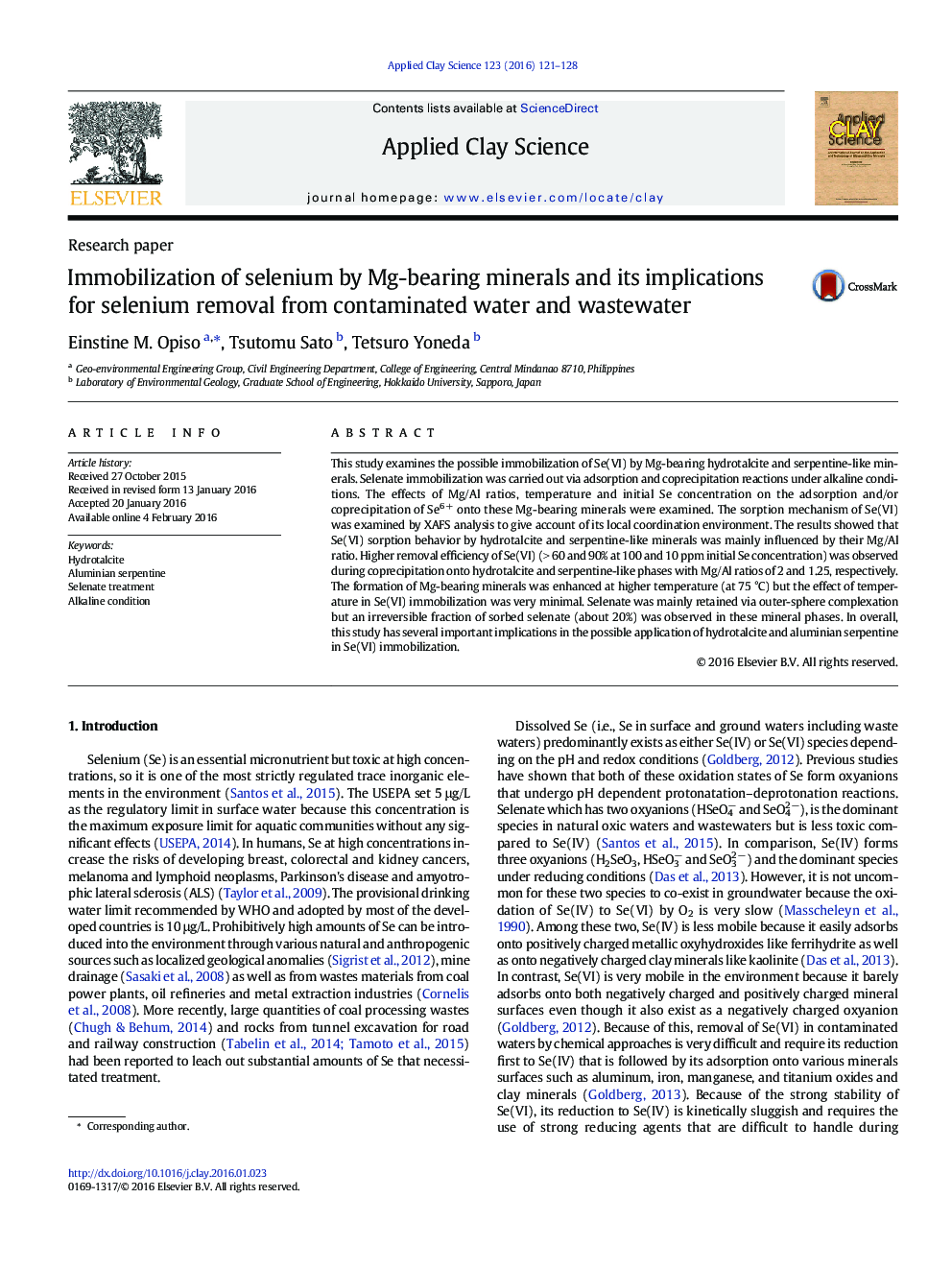| کد مقاله | کد نشریه | سال انتشار | مقاله انگلیسی | نسخه تمام متن |
|---|---|---|---|---|
| 1694123 | 1519061 | 2016 | 8 صفحه PDF | دانلود رایگان |

• Se(VI) removal by Mg-bearing minerals was examined in alkaline condition.
• Hydrotalcite and serpentine-like minerals were the dominant mineralogy.
• Selenate removal efficiency was mainly influenced by the Mg/Al ratio.
• Mg/Al ratio of 2 and 1.25 showed higher removal efficiency for selenate.
• Selenate was mainly retained via outer-sphere complexation.
This study examines the possible immobilization of Se(VI) by Mg-bearing hydrotalcite and serpentine-like minerals. Selenate immobilization was carried out via adsorption and coprecipitation reactions under alkaline conditions. The effects of Mg/Al ratios, temperature and initial Se concentration on the adsorption and/or coprecipitation of Se6 + onto these Mg-bearing minerals were examined. The sorption mechanism of Se(VI) was examined by XAFS analysis to give account of its local coordination environment. The results showed that Se(VI) sorption behavior by hydrotalcite and serpentine-like minerals was mainly influenced by their Mg/Al ratio. Higher removal efficiency of Se(VI) (> 60 and 90% at 100 and 10 ppm initial Se concentration) was observed during coprecipitation onto hydrotalcite and serpentine-like phases with Mg/Al ratios of 2 and 1.25, respectively. The formation of Mg-bearing minerals was enhanced at higher temperature (at 75 °C) but the effect of temperature in Se(VI) immobilization was very minimal. Selenate was mainly retained via outer-sphere complexation but an irreversible fraction of sorbed selenate (about 20%) was observed in these mineral phases. In overall, this study has several important implications in the possible application of hydrotalcite and aluminian serpentine in Se(VI) immobilization.
Journal: Applied Clay Science - Volume 123, April 2016, Pages 121–128